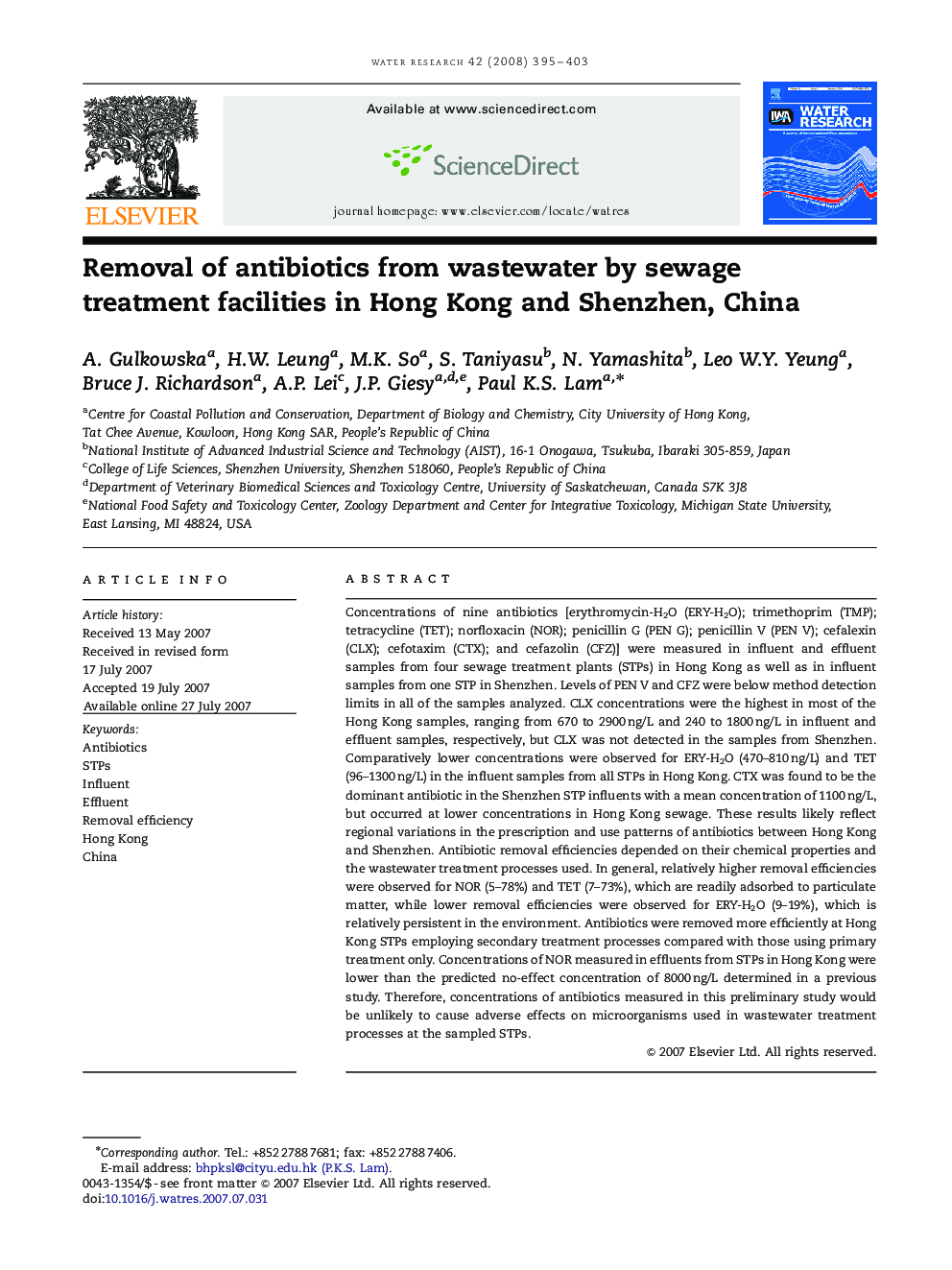| Article ID | Journal | Published Year | Pages | File Type |
|---|---|---|---|---|
| 4485774 | Water Research | 2008 | 9 Pages |
Concentrations of nine antibiotics [erythromycin-H2O (ERY-H2O); trimethoprim (TMP); tetracycline (TET); norfloxacin (NOR); penicillin G (PEN G); penicillin V (PEN V); cefalexin (CLX); cefotaxim (CTX); and cefazolin (CFZ)] were measured in influent and effluent samples from four sewage treatment plants (STPs) in Hong Kong as well as in influent samples from one STP in Shenzhen. Levels of PEN V and CFZ were below method detection limits in all of the samples analyzed. CLX concentrations were the highest in most of the Hong Kong samples, ranging from 670 to 2900 ng/L and 240 to 1800 ng/L in influent and effluent samples, respectively, but CLX was not detected in the samples from Shenzhen. Comparatively lower concentrations were observed for ERY-H2O (470–810 ng/L) and TET (96–1300 ng/L) in the influent samples from all STPs in Hong Kong. CTX was found to be the dominant antibiotic in the Shenzhen STP influents with a mean concentration of 1100 ng/L, but occurred at lower concentrations in Hong Kong sewage. These results likely reflect regional variations in the prescription and use patterns of antibiotics between Hong Kong and Shenzhen. Antibiotic removal efficiencies depended on their chemical properties and the wastewater treatment processes used. In general, relatively higher removal efficiencies were observed for NOR (5–78%) and TET (7–73%), which are readily adsorbed to particulate matter, while lower removal efficiencies were observed for ERY-H2O (9–19%), which is relatively persistent in the environment. Antibiotics were removed more efficiently at Hong Kong STPs employing secondary treatment processes compared with those using primary treatment only. Concentrations of NOR measured in effluents from STPs in Hong Kong were lower than the predicted no-effect concentration of 8000 ng/L determined in a previous study. Therefore, concentrations of antibiotics measured in this preliminary study would be unlikely to cause adverse effects on microorganisms used in wastewater treatment processes at the sampled STPs.
